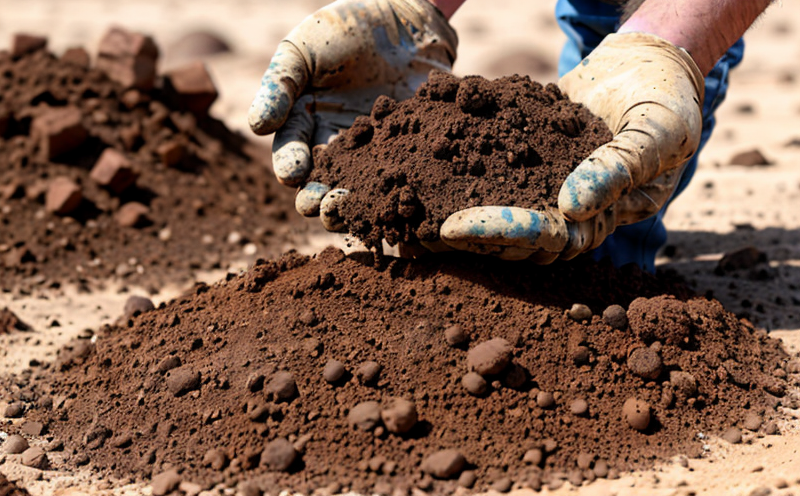DIN 18122 Water Content of Soil Testing
The DIN 18122 standard is a comprehensive method for determining the water content of soil. This service is essential in mining testing, particularly when it comes to characterizing soil and overburden materials, as part of quality assurance processes or research aimed at optimizing extraction methods.
The water content of soil plays a crucial role in several aspects of mining operations, including environmental impact assessments, stability evaluations, and material handling. Understanding the moisture content helps in calculating the weight of the material to be extracted accurately, which is critical for cost management and operational planning. Moreover, knowing the water content can influence the decision on whether to apply dewatering techniques or adjust blasting methods.
The DIN 18122 method involves drying a soil sample at specified temperatures (typically between 105°C and 110°C) until it reaches a constant weight. The difference in mass before and after drying provides the water content. This technique is simple yet effective, ensuring that the moisture level of the soil or overburden material is accurately determined.
The process begins with collecting representative samples from various depths within the mining area. Proper sample preparation ensures accurate results; this involves sieving, mixing, and dividing the collected material into smaller portions for testing. The use of appropriate equipment such as balances, ovens, and drying cabinets is crucial to ensure precision in measurement.
The DIN 18122 method not only helps in understanding the immediate condition of the soil but also provides valuable data for long-term monitoring. This information can be used to predict changes due to environmental factors or operational activities. For instance, if the water content increases significantly over time, it might indicate a higher risk of landslides, which is critical knowledge for safety and compliance purposes.
Understanding the water content allows mining companies to implement appropriate measures to manage risks effectively. This could include adjusting extraction schedules based on expected seasonal changes in moisture levels or designing dewatering systems that minimize environmental impact while adhering to regulatory standards.
The accuracy of DIN 18122 testing is paramount for compliance with international and local regulations. Compliance officers can rely on this service to ensure their operations meet the strictest environmental and safety standards. Additionally, R&D engineers benefit from precise moisture content data when developing new extraction techniques or improving existing processes.
By leveraging DIN 18122 testing, mining companies not only enhance operational efficiency but also contribute positively to sustainable practices by minimizing waste and ensuring responsible resource management.
Scope and Methodology
The scope of the DIN 18122 method encompasses a wide range of applications within soil characterization. This includes determining the water content in various types of mining overburden, such as clay, sand, silt, and loam. The standard is particularly useful for large-scale mining operations where accurate moisture levels are critical to overall project management.
The methodology involves several key steps:
- Collecting representative soil samples from the mining area.
- Mixing the collected material thoroughly to ensure homogeneity.
- Selecting a portion of the mixed sample for testing.
- Weighing the chosen sample before drying.
- Drying the sample in an oven at 105°C to 110°C until it reaches a constant weight.
- Re-weighing the dried sample after reaching equilibrium.
- Calculating the water content using the difference between initial and final weights.
The DIN 18122 method is simple yet robust, ensuring reliable results. The drying process must be carried out carefully to avoid any loss of material or contamination that could affect accuracy. Proper calibration of instruments such as balances and ovens is essential for consistent measurements. Compliance with the standard ensures that the water content data is accurate and can be relied upon for decision-making purposes.
Industry Applications
- Mining operations, particularly in large-scale projects where soil characteristics significantly impact extraction methods.
- Environmental impact assessments to determine the effects of mining activities on local ecosystems.
- Material handling and storage, ensuring that the weight of materials being transported or stored is accurately calculated.
- Safety evaluations to identify potential risks such as landslides due to changes in soil moisture content.
The DIN 18122 method is widely used across various sectors within mining testing. Its simplicity and reliability make it a preferred choice for ensuring that all aspects of the project are managed efficiently and safely. By providing accurate water content data, this service supports sustainable practices in mining operations.
Quality and Reliability Assurance
The DIN 18122 method is renowned for its reliability and accuracy, making it a cornerstone of quality assurance processes in mining testing. Compliance with the standard ensures that all aspects of soil characterization are conducted to the highest standards.
- Calibration: Regular calibration of instruments such as balances and ovens is essential to maintain precision.
- Sampling: Representative sampling techniques ensure that the samples used for testing are reflective of the entire mining area.
- Drying Process: The drying process must be conducted under controlled conditions to avoid any external factors affecting the results.
- Data Analysis: Accurate data analysis is crucial for drawing meaningful conclusions from the test results.
The reliability of DIN 18122 testing enhances trust in mining operations, ensuring that all stakeholders have confidence in the accuracy and consistency of the results. This is particularly important for compliance officers responsible for meeting regulatory requirements and maintaining operational standards.





